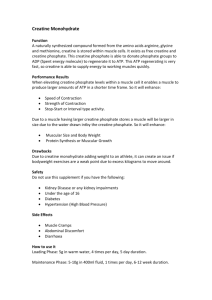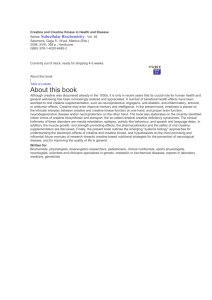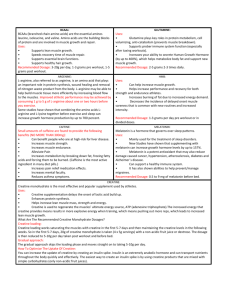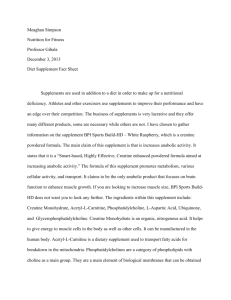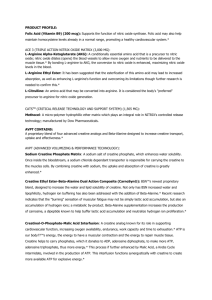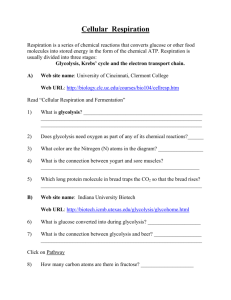Fermentation - Hartland High School
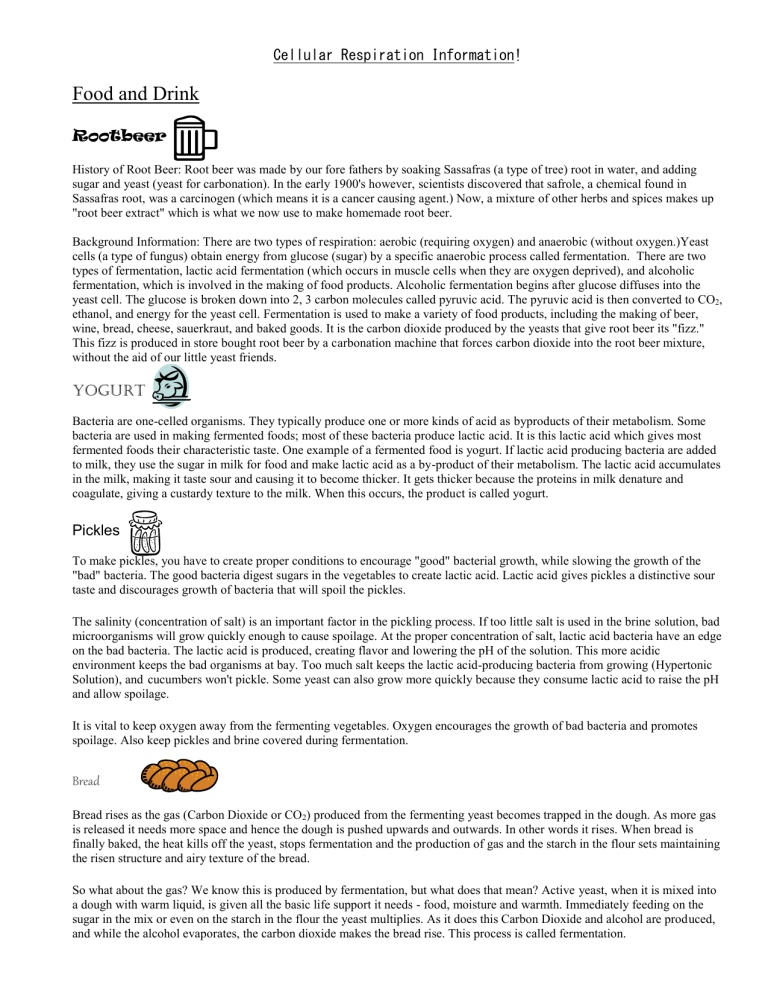
Cellular Respiration Information!
Food and Drink
Rootbeer
History of Root Beer: Root beer was made by our fore fathers by soaking Sassafras (a type of tree) root in water, and adding sugar and yeast (yeast for carbonation). In the early 1900's however, scientists discovered that safrole, a chemical found in
Sassafras root, was a carcinogen (which means it is a cancer causing agent.) Now, a mixture of other herbs and spices makes up
"root beer extract" which is what we now use to make homemade root beer.
Background Information: There are two types of respiration: aerobic (requiring oxygen) and anaerobic (without oxygen.)Yeast cells (a type of fungus) obtain energy from glucose (sugar) by a specific anaerobic process called fermentation. There are two types of fermentation, lactic acid fermentation (which occurs in muscle cells when they are oxygen deprived), and alcoholic fermentation, which is involved in the making of food products. Alcoholic fermentation begins after glucose diffuses into the yeast cell. The glucose is broken down into 2, 3 carbon molecules called pyruvic acid. The pyruvic acid is then converted to CO
2
, ethanol, and energy for the yeast cell. Fermentation is used to make a variety of food products, including the making of beer, wine, bread, cheese, sauerkraut, and baked goods. It is the carbon dioxide produced by the yeasts that give root beer its "fizz."
This fizz is produced in store bought root beer by a carbonation machine that forces carbon dioxide into the root beer mixture, without the aid of our little yeast friends.
Yogurt
Bacteria are one-celled organisms. They typically produce one or more kinds of acid as byproducts of their metabolism. Some bacteria are used in making fermented foods; most of these bacteria produce lactic acid. It is this lactic acid which gives most fermented foods their characteristic taste. One example of a fermented food is yogurt. If lactic acid producing bacteria are added to milk, they use the sugar in milk for food and make lactic acid as a by-product of their metabolism. The lactic acid accumulates in the milk, making it taste sour and causing it to become thicker. It gets thicker because the proteins in milk denature and coagulate, giving a custardy texture to the milk. When this occurs, the product is called yogurt.
Pickles
To make pickles, you have to create proper conditions to encourage "good" bacterial growth, while slowing the growth of the
"bad" bacteria. The good bacteria digest sugars in the vegetables to create lactic acid. Lactic acid gives pickles a distinctive sour taste and discourages growth of bacteria that will spoil the pickles.
The salinity (concentration of salt) is an important factor in the pickling process. If too little salt is used in the brine solution, bad microorganisms will grow quickly enough to cause spoilage. At the proper concentration of salt, lactic acid bacteria have an edge on the bad bacteria. The lactic acid is produced, creating flavor and lowering the pH of the solution. This more acidic environment keeps the bad organisms at bay. Too much salt keeps the lactic acid-producing bacteria from growing (Hypertonic
Solution), and cucumbers won't pickle. Some yeast can also grow more quickly because they consume lactic acid to raise the pH and allow spoilage.
It is vital to keep oxygen away from the fermenting vegetables. Oxygen encourages the growth of bad bacteria and promotes spoilage. Also keep pickles and brine covered during fermentation.
Bread
Bread rises as the gas (Carbon Dioxide or CO
2
) produced from the fermenting yeast becomes trapped in the dough. As more gas is released it needs more space and hence the dough is pushed upwards and outwards. In other words it rises. When bread is finally baked, the heat kills off the yeast, stops fermentation and the production of gas and the starch in the flour sets maintaining the risen structure and airy texture of the bread.
So what about the gas? We know this is produced by fermentation, but what does that mean? Active yeast, when it is mixed into a dough with warm liquid, is given all the basic life support it needs - food, moisture and warmth. Immediately feeding on the sugar in the mix or even on the starch in the flour the yeast multiplies. As it does this Carbon Dioxide and alcohol are produced, and while the alcohol evaporates, the carbon dioxide makes the bread rise. This process is called fermentation.
Fitness Focus
Aerobic and Anaerobic Training
Aerobic activity – activity were the body is able to keep up with the oxygen demands of the activity (longer duration, steady pace, increased breathing rate, can speak)
Anaerobic activity – activity were the body cannot keep up with the oxygen demands of the activity (short duration, near maximum pace, rapid/deep breathing rate, difficulty speaking)
Fitness Facts
Aerobic and cardiovascular activity can help maintain a healthy:
heart and blood vessels
lungs
body composition
brain
…and reduce the risk of CARDIOVASCULAR DISEASE.
Different activities or sports require different types of training. (aerobic and/or
anaerobic)
Aerobic – walking, jogging, biking, swimming, dancing
Anaerobic – football, basketball, baseball, softball, gymnastics, wrestling, volleyball, surfing, skating
What is Creatine?
Creatine is a compound that's involved in the production of energy in the body, in the form of adenosine triphosphate (ATP).
Made in the liver, approximately 95% of the body's creatine ends up being stored in skeletal muscles and the remaining 5% is found in the brain, heart and testes. Once it's used, creatine is converted to a waste product called creatinine and excreted in urine.
Creatine is found in small amounts in red meat and fish. However, much of it is destroyed by cooking. It's also made naturally in the body from L-arginine, L-glycine and L-methionine, amino acids that are principally found in animal protein. Insulin is needed for creatine to enter muscles, so consuming carbohydrates with creatine may increase the amount of creatine available to muscles.
Creatine supplements are available in capsules or as a powder at health food stores, some drug stores and online. One of the most popular forms of creatine is creatine monohydrate.
Why Do People Take Creatine?
Athletic Performance
Research suggests that creatine may provide some benefit in improving performance in high-intensity, short-duration activities such as weight lifting and sprinting. Creatine increases production of ATP, an energy source for muscles during brief, explosive periods of activity. It hasn't been found, however, to help with aerobic or endurance sports such as marathon running.
Creatine may also decrease muscle fatigue. It appears to reduce lactic acid, an energy waste product that causes muscle fatigue.
More research is needed on the effectiveness of creatine. Excess creatine is removed by the kidneys, so some experts question the use of creatine supplements in people with sufficient levels of creatine in their muscles.
Creatine is extremely popular with athletes and bodybuilders, many of whom consider it to have similar effects as anabolic steroids without the side effects. It hasn't been banned by many athletic associations. Still, some organizations question whether it's ethical to permit athletes to take a supplement that could potentially enhance performance. Others have expressed concern that use of performance-enhancing supplements could lead to the use of other potentially risky supplements and drugs.
Muscle Mass
Some studies have shown an increase in lean muscle mass with creatine. It may do this because creatine in muscle attracts water.
More research is needed, however, because not all studies have confirmed this finding. Also, studies have used different doses of creatine, so it's unclear what a safe or effective dose would be.
Muscle Conditions
Because creatine may strengthen muscle, it has been suggested as a complementary treatment for conditions in which muscle weakness occurs, such as muscular dystrophy, congestive heart failure, Huntington's disease, McArdle's disease (also called glycogen storage disease type V), amyotrophic lateral sclerosis, myasthenia gravis, Parkinson's disease and after injury or surgery.
Side Effects and Safety Concerns
Possible side effects of creatine include:
Stomach cramps
Nausea
Diarrhea
Loss of appetite
Muscle cramps
Weight gain
Creatine may cause water to be drawn away from other areas of the body and into muscle tissue, which could increase the risk of dehydration.
High doses of creatine could potentially injure the kidneys, liver and heart. Theoretically, creatine may cause kidney damage because its by-product, creatinine, is filtered through the kidneys into urine. Although studies haven't found adverse events in recommended doses, there have been a couple of case reports of people who have experienced kidney collapse and three deaths in people taking creatine, but there is no definitive evidence that creatine was the cause. People with kidney disease or liver disease should avoid creatine.
Creatine supplements may cause asthmatic symptoms, such as wheezing and coughing, in some people.
There is some concern that oral creatine supplements are metabolized in the body to form a toxic waste product formaldehyde, which could potentially damage cells, DNA molecules and blood vessels.
One of the main safety concerns is that individuals using creatine to enhance athletic performance or muscle mass, particularly adolescents, may exceed recommended dosages and take it without supervision.
Names___________________________________________________________________________________hour_____
1.
How has root beer making changed? Why?
2.
Describe the differences between lactic acid fermentation and alcoholic fermentation.
3.
What gives home made root beer its fizz? How about in store-bought root beer?
4.
What do most bacteria produce, and what gives fermented food its taste (same answer)? _______________________
5.
How is salinity important in pickle making?
6.
Why is it important to keep oxygen away from fermenting vegetables?
7.
What makes bread rise? ____________
8.
What does yeast feed off of in the dough? ______________________________________________
9.
What types of activities are considered aerobic?
10.
What types of activities are considered anaerobic?
11.
What risk is reduced by doing aerobic activity? ____________________________________
12.
What is creatine?
13.
How can ceatine help athletic performance?
14.
What conditions could creatine help to treat?
15.
What are some possible side effects of using creatine?
16.
What toxic waste may be produced when creatine is metabolized?
17.
What is one of the main safety concerns with using creatine?
